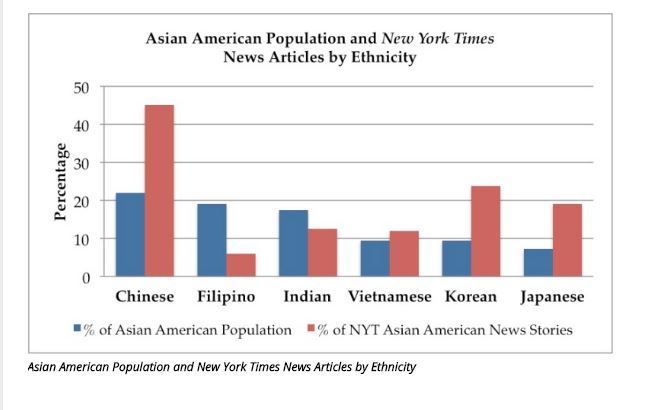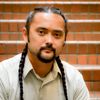Dear New York Times:
Maybe we should have let it go, like we’ve done many times before ― turned our other brown cheek. E.J. just woke up in Seattle; the rest of us were beginning our work days on the East Coast. All of us were expecting to go through a normal Friday. Then we saw that you just posted a video to accompany Michael Luo’s powerful letter about a racist encounter he had and the very much-needed #thisis2016 hashtag it inspired. We got excited! We watched the same video showing a gaggle of people talk about the “Asian American” experience.
And we were, honestly, stunned. Your video told us, “You’re still invisible!”
You did this during Filipino American History Month ― the month when we are supposed to be most proud of our brown presence in the U.S.
And you did this during election season ― when xenophobia against South Asians is on the rise and Islamophobia is so overt that Muslim Americans (and South Asian Americans who are presumed to be Muslim) expect to be discriminated in their everyday lives.

We hesitated for a second and then hustled to confront you. We pulled out our smartphones and started commenting on your social media posts, questioning why seemingly 96% of the stories shared were East Asian or non-Brown Asian stories. It was comical, in retrospect, because you probably don’t even read comments on social media. But the pain you inflicted on us with your continued disregard is real. It clearly tells us, once again, that we are unseen, unheard, and unappreciated in this country.
“We are a part of this country!” We yelled back.
It felt silly. But how else to prove we belonged?
This was not our first encounter, of course, with marginalization – even among Asian Americans. Ask any Filipino American or South Asian – or anyone who is not Chinese, Korean or Japanese – and they’ll readily summon memories of repeated attempts to explain why we are not “yellow,” or disturbing encounters on the street, grocery store, airport, and anywhere really, because our brown skin activates different kinds of stereotypes in this country.
This was not even our first encounter with you, as over the past six months you have released two videos about the “Asian American” experience. Combined, both videos showed the stories of 37 Asian Americans, but only one (3%) was a Filipino story, at a time when Filipinos compose 20% of the Asian American population. And only five out of the 37 (13.5%) seemed to be South Asian stories with the most recent video not having any South Asian at all, at a time when South Asians also compose 20% of the Asian American population. In fact, we’re so tired of being forgotten that there has been a few times when we took it upon ourselves to have our stories be heard.

Sure, there are some efforts to better address this great diversity within the large Asian Pacific Islander umbrella, like the progress toward disaggregating data so that we can better understand the issues facing our communities.
But for some reason — and, yes, it probably has to do with the political climate right now that makes brown-skinned people, especially “foreign-looking” ones with “weird names” and who are not Christians, very vulnerable — this time felt different.
A few hours later, after thinking about it some more, a pang of sadness welled up inside us.
You are in New York City where there’s no shortage of Brown Asians. You have enough resources to make it happen. You have highly-educated staff. You seemed, well, informed. But yet you still don’t see us, and, the reality is, neither do many in this country right now.
Maybe you don’t know this, but the continued failure to include us whenever you talk about “Asian Americans” is extremely insulting, degrading, and oppressive. It gets to the heart of the invisibility that Brown Asians experience. As Michael Luo stated, “It’s this persistent sense of otherness that a lot of us struggle with every day,” but we also feel this marginalization within the Asian American community! That even though we compose more than half of the Asian Pacific Islander population, even though we have been in these lands now called the United States since 1587, and even though many of us trace our roots back to lands that are affected by U.S. colonialism and imperialism, we still don’t belong. We’re still forgotten. We’re still not Asian American, let alone American. It’s one of the reasons many Brown Asians do not identify as Asian Americans. Perhaps we just don’t feel connected to East Asian people, cultures, and lived realities. Perhaps we also don’t feel welcomed and included.
Once again, we feel like outsiders – even within the Asian American community.
And we wonder if that feeling will ever go away. Perhaps, more important, we wonder whether future generations of Brown Asians will always feel that way too.
E.J.’s 7-year-old son, who also watched the video, observed, “Those people don’t look like you, Dad. They don’t look like us.”
No, they don’t, and although there are similarities – our experiences are very different. E.J. tried to explain why you might have forgotten to include Brown Asians and why we matter. Dr. Karthick Ramakrishnan tried to explain this too.
We’re Asian Americans, E.J. said, at least that’s what society tells us. But, even though this is 2016, people still don’t understand that #BrownAsiansExist.
I hope you do now.
Sincerely,
E.J.R. David, Ali Mattu, Razia Kosi, Ernabel Demillo, & Kevin Nadal
~~~~~~~~~~~~~~
E.J.R. David is Associate Professor of Psychology at the University of Alaska Anchorage. Follow him on Twitter here.
Ali Mattu is an assistant professor at the Columbia University Medical Center. Follow him on Twitter here.
Razia Kosi is the Founder, Counselors Helping (South) Asians, Inc. (CHAI). Follow her on Twitter here.
Ernabel Demillo is the host of CUNY TV’s Asian American Life and journalism professor at St. Peter’s University. Follow her on Twitter here.
Kevin Nadal is president of the Asian American Psychological Association and Associate Professor of Psychology at City University of New York. Follow him on Twitter here.
